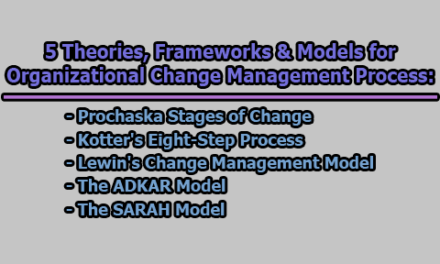How to Balance Urgent Tasks without Compromising Quality and Productivity:
In the fast-paced world of professionals, the challenge of balancing urgent tasks without compromising quality is a ubiquitous concern. The constant juggling act of multiple deadlines, conflicting priorities, and limited resources demands a strategic approach to time and energy management. In the rest of this article, we will explore how to balance urgent tasks without compromising quality and productivity.
Step 1: Assess Your Tasks:
The initial and crucial step in managing urgent tasks without compromising quality is a comprehensive assessment. The Eisenhower matrix, a time-tested tool, offers a structured approach. It classifies tasks into four quadrants:
1.1 Do:
- Definition: Urgent and important tasks fall into this category.
- Priority: Execute these tasks first, as they directly contribute to immediate goals and deadlines.
- Importance: Recognize the critical impact of these tasks on the overall success of your projects.
Example: If a project deadline is looming, completing a critical phase or addressing a pressing issue would fall into the “Do” category.
1.2 Decide:
- Definition: Tasks that are important but not urgent are in this quadrant.
- Priority: Plan and schedule these tasks, as they require thoughtful consideration.
- Importance: Acknowledge that neglecting these tasks may lead to urgency in the future.
Example: Planning the next quarter’s objectives or conducting a strategic review of ongoing projects would be tasks falling into the “Decide” category.
1.3 Delegate:
- Definition: Tasks that are urgent but not important can be delegated.
- Priority: Assign these tasks to others, recognizing that your time is better spent elsewhere.
- Importance: Understand the value of focusing on critical aspects of your role while entrusting routine tasks to capable team members.
Example: Responding to routine emails or administrative tasks could be delegated, allowing you to concentrate on more strategic responsibilities.
1.4 Delete:
- Definition: Tasks that are neither urgent nor important should be eliminated.
- Priority: Remove these tasks from your to-do list to avoid distractions and time-wasting activities.
- Importance: Recognize that maintaining focus on meaningful tasks is essential for productivity.
Example: Engaging in activities that do not contribute to your professional or personal goals, like excessive social media scrolling during work hours, falls into the “Delete” category.
By effectively categorizing tasks using the Eisenhower matrix, professionals gain clarity on where to direct their immediate attention and resources, ensuring that the most critical tasks are addressed promptly while minimizing unnecessary activities. This strategic approach lays the foundation for a more organized and efficient workflow.
Step 2: Plan Your Schedule:
Once tasks are assessed and categorized, the next pivotal step is to plan a schedule that aligns with the urgency and importance of each task. This involves a thoughtful consideration of various factors that can impact productivity and the quality of work.
2.1 Time Allocation:
- Consider Your Energy Levels: Different tasks may require varying levels of mental and physical energy. Allocate time for tasks that demand higher energy during your peak productivity hours.
- Realistic Time Estimates: Be honest about the time each task requires. Overestimating or underestimating can lead to inefficient time management.
Example: If you’re a morning person with high energy levels early in the day, schedule critical thinking or creative tasks during this period.
2.2 Prioritization Within Categories:
- Pareto Principle: Prioritize tasks within each category based on the Pareto principle, focusing on the 20% of tasks that contribute to 80% of the results. This ensures that the most impactful tasks are addressed first.
- Flexibility: Allow for some flexibility in your schedule to accommodate unexpected urgencies or changes in priorities.
Example: If you’ve identified a crucial report as part of the “Do” category, ensure it is scheduled early in the day or week, given its significant impact on project outcomes.
2.3 Integration of Tools:
- Calendar Apps: Leverage calendar apps to visually organize and track your schedule. Set reminders for critical deadlines and meetings to stay on top of time-sensitive tasks.
- Task Lists and Project Management Tools: Utilize task lists and project management tools to break down larger tasks into manageable subtasks, facilitating a more systematic approach.
Example: Integrating a project management tool that provides reminders and progress tracking can be invaluable for staying organized and meeting deadlines.
2.4 Mitigating Interruptions:
- Communication: Clearly communicate your focused work hours to colleagues to minimize unnecessary interruptions. Use “Do Not Disturb” features during concentrated work periods.
- Designated Breaks: Schedule short breaks to refresh and recharge, mitigating burnout without compromising the overall quality of work.
Example: If you have a report deadline approaching, communicate to your team that you’ll be in a focused work mode for a few hours and will be available for discussions during specific times.
By planning your schedule thoughtfully, considering your energy levels, prioritizing tasks within categories, integrating productivity tools, and mitigating interruptions, you set the stage for efficient and effective execution of tasks. This structured approach not only optimizes time management but also enhances the likelihood of maintaining high-quality output.
Step 3: Set Realistic Expectations:
Setting and managing expectations is a cornerstone of effective task management. This involves clear communication with stakeholders, proactive negotiation, and a realistic assessment of your own capabilities.
3.1 Stakeholder Communication:
- Transparency: Communicate transparently with stakeholders, including managers, clients, and team members, about your priorities, deadlines, and deliverables. Ensure that everyone is on the same page regarding the urgency and importance of tasks.
- Expectation Alignment: Align stakeholder expectations with your assessment of task urgency and importance. Provide regular updates on progress and any potential deviations from the original plan.
Example: If a client has requested a deliverable within a tight timeframe, communicate potential challenges upfront and negotiate a realistic timeline based on your workload.
3.2 Negotiation and Adjustment:
- Flexibility: Be open to negotiation and adjustment of expectations based on changing circumstances. Recognize that unforeseen issues or additional priorities may require adapting the original plan.
- Proactive Communication: Proactively communicate changes in deadlines or priorities to stakeholders, explaining the reasons behind the adjustments.
Example: If an urgent task emerges that requires immediate attention, negotiate with other project stakeholders to adjust timelines or redistribute responsibilities accordingly.
3.3 Reputation Management:
- Avoid Overcommitting or Underdelivering: Strive to strike a balance between overcommitting and underdelivering. Overpromising can lead to stress and compromised quality, while consistently underdelivering can harm your professional reputation.
- Celebrating Achievements: Celebrate successful task completions, no matter how small, to boost morale and demonstrate your commitment to quality work.
Example: If you consistently meet or exceed expectations on critical tasks, it contributes positively to your professional reputation and establishes you as a reliable team member.
3.4 Flexibility and Adaptability:
- Adapt to Changing Circumstances: Acknowledge that circumstances may change, requiring adjustments to your initial plans. Be flexible and adaptable in responding to emerging priorities or unforeseen challenges.
- Continuous Evaluation: Continuously evaluate and reassess your workload and priorities. Regularly review and update stakeholders on any changes in your availability or focus areas.
Example: If unexpected external factors impact your ability to meet a previously agreed-upon deadline, communicate this promptly and propose alternative solutions or timelines.
By setting realistic expectations through transparent stakeholder communication, negotiation, reputation management, and flexibility, professionals can navigate the dynamic nature of their roles more effectively. This proactive approach not only enhances collaboration but also ensures that the quality of work remains uncompromised, even in the face of changing circumstances.
Step 4: Review and Improve:
After executing tasks and managing expectations, a critical phase involves reviewing your performance, soliciting feedback, and implementing continuous improvements. This iterative process ensures that you refine your approach over time, enhancing both efficiency and the quality of your work.
4.1 Monitor Progress and Performance:
- Regular Assessment: Implement a system for monitoring your progress on tasks and evaluating the quality of your work. Regularly assess whether you’re meeting deadlines and achieving the desired outcomes.
- Performance Metrics: Establish key performance indicators (KPIs) for your tasks to quantitatively measure success. Use these metrics to identify areas for improvement.
Example: If you’re working on a project with specific milestones, regularly review your progress against these milestones to ensure you’re on track.
4.2 Solicit and Incorporate Feedback:
- Stakeholder Feedback: Actively seek feedback from stakeholders, including managers, team members, and clients. Understand their perspectives on the quality and timeliness of your work.
- Feedback Incorporation: Use constructive feedback as a tool for improvement. Adjust your approach based on insights gained, ensuring continuous refinement.
Example: If a team member suggests a more efficient way to complete a recurring task, incorporate their suggestion into your workflow to increase efficiency.
4.3 Reflection and Documentation:
- Reflect on Challenges and Successes: Take time to reflect on both challenges and successes. Understand what worked well and what could be improved. Use these reflections to inform your future strategies.
- Documentation of Best Practices: Document best practices and lessons learned during the completion of tasks. Create a knowledge repository that serves as a reference for future projects.
Example: If you encountered unexpected challenges in a project, reflect on how you navigated them and document the strategies used for future reference.
4.4 Update Task Categories and Priorities:
- Dynamic Task Assessment: Recognize that task categories, priorities, and urgency levels may change over time. Regularly update these classifications based on the evolving needs of projects and shifting priorities.
- Strategic Adjustments: Make strategic adjustments to your task management approach based on the outcomes of your reviews. This could involve reprioritizing certain types of tasks or allocating resources differently.
Example: If you find that a particular type of task consistently takes longer than anticipated, consider reclassifying it or adjusting your scheduling approach to accommodate the necessary time.
By incorporating a review and improvement cycle into your task management strategy, you create a feedback loop that promotes ongoing refinement. This adaptive approach ensures that your methods stay aligned with your professional growth and evolving project requirements, ultimately contributing to sustained quality and effectiveness.
Step 5: Use Tools and Resources:
In the modern professional landscape, leveraging technology and various resources is essential for optimizing task management. The right tools can streamline processes, enhance organization, and provide valuable support in handling urgent tasks without compromising quality.
5.1 Calendar Apps and Reminders:
- Organize Your Schedule: Calendar apps help in visualizing and organizing your schedule. Use them to mark important deadlines, meetings, and dedicated work periods.
- Set Reminders: Utilize reminder features to prompt you about upcoming tasks and deadlines. This helps in staying on top of time-sensitive responsibilities.
Example: Google Calendar or Microsoft Outlook can be effective tools for organizing your schedule and setting reminders for critical tasks.
5.2 Task Lists and Project Management Apps:
- Break Down Tasks: Task lists and project management apps allow you to break down larger tasks into manageable subtasks. This facilitates a more systematic approach to task completion.
- Progress Tracking: Benefit from progress tracking features to monitor the status of ongoing projects. This helps in identifying areas that may require additional attention.
Example: Applications like Trello, Asana, or Jira can be instrumental in managing tasks collaboratively and tracking project progress.
5.3 Educational Resources:
- Continuous Learning: Stay informed about tools and methodologies that can enhance your efficiency. Explore online courses, books, and articles related to time management, productivity, and task optimization.
- Skill Development: Invest time in learning new skills that align with your professional goals. This can contribute to improving your overall task management capabilities.
Example: Platforms like LinkedIn Learning, Coursera, or industry-specific publications can provide valuable insights into the latest tools and techniques for effective task management.
5.4 Collaboration and Support:
- Collaborative Platforms: Use collaborative platforms to engage with colleagues, mentors, or experts who can offer support and assistance.
- Networking for Resources: Build a professional network that can be a source of guidance and resources. Reach out to individuals who have experience in managing similar tasks.
Example: Collaboration tools such as Slack or Microsoft Teams can facilitate communication and collaboration, while networking on professional platforms like LinkedIn can connect you with valuable resources.
5.5 Automation Tools:
- Automate Repetitive Tasks: Identify tasks that can be automated to save time and reduce manual effort. Automation tools can handle routine processes, allowing you to focus on more complex and strategic aspects of your work.
- Integration with Workflows: Integrate automation tools seamlessly into your workflow for a more efficient and streamlined task management process.
Example: Zapier or IFTTT (If This Then That) can automate repetitive tasks by creating connections between different applications.
By incorporating these tools into your task management strategy, you empower yourself to work more efficiently and collaboratively. The right technology and resources act as force multipliers, enabling you to navigate urgent tasks with precision and maintain the quality of your work in dynamic professional environments.
Step 6: Maintain Balance and Well-being:
The pursuit of professional success should not come at the expense of personal well-being. Balancing urgent tasks while preserving mental and physical health is paramount for sustained productivity and the delivery of high-quality results. Here are essential strategies for maintaining balance and well-being:
6.1 Avoid Burnout and Stress:
- Recognize Warning Signs: Be attuned to signs of burnout and stress, such as fatigue, irritability, or a decline in the quality of work. Recognizing these signs early allows for proactive intervention.
- Set Boundaries: Establish clear boundaries between work and personal life. Avoid excessive overtime, and allow yourself time for rest and rejuvenation.
Example: If you notice persistent fatigue, consider adjusting your work hours or taking short breaks during the day to alleviate stress.
6.2 Physical and Mental Health:
- Regular Exercise: Incorporate regular physical activity into your routine. Exercise is known to enhance mood, energy levels, and cognitive function.
- Mental Health Practices: Engage in practices that promote mental well-being, such as mindfulness, meditation, or activities that bring joy and relaxation.
Example: Taking a short walk or practicing mindfulness techniques during breaks can positively impact both physical and mental well-being.
6.3 Enjoying Work and Life:
- Find Intrinsic Motivation: Identify aspects of your work that genuinely interest and motivate you. This intrinsic motivation fosters a positive attitude towards tasks.
- Pursue Hobbies and Interests: Dedicate time to activities outside of work that bring joy and fulfillment. This balance contributes to overall life satisfaction.
Example: If you enjoy a particular aspect of your job, focus on incorporating more of these tasks into your routine to maintain a sense of enjoyment.
6.4 Practice Gratitude and Positivity:
- Gratitude Journaling: Maintain a gratitude journal to reflect on positive aspects of your work and life. This practice enhances perspective and resilience.
- Positive Affirmations: Incorporate positive affirmations into your daily routine to foster a positive mindset, even in challenging situations.
Example: Start or end your day by noting three things you are grateful for, fostering a positive outlook.
6.5 Celebrate Achievements:
- Acknowledge Successes: Celebrate both small and significant achievements. Recognizing success boosts motivation and reinforces a sense of accomplishment.
- Share Successes with Others: Share your achievements with colleagues or team members, fostering a positive and supportive work environment.
Example: If you successfully meet a tight deadline, take a moment to acknowledge your accomplishment, and perhaps share your success during a team meeting.
Maintaining balance and well-being is not just a personal benefit but contributes significantly to sustained professional success. Prioritizing mental and physical health ensures that you approach urgent tasks with clarity and resilience, ultimately enhancing the quality of your work over the long term.
In conclusion, balancing urgent tasks without compromising quality and productivity is a skill that can significantly impact professional success. By assessing tasks, planning schedules, setting realistic expectations, reviewing and improving, using tools and resources, and maintaining balance and well-being, professionals can navigate the complexities of their roles effectively. This above discussion provides actionable insights for individuals seeking to achieve high-quality results while managing the demands of a dynamic work environment.

Assistant Teacher at Zinzira Pir Mohammad Pilot School and College










